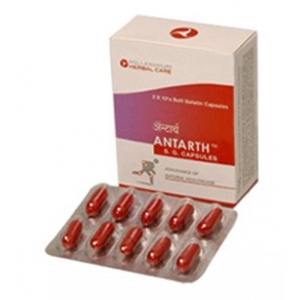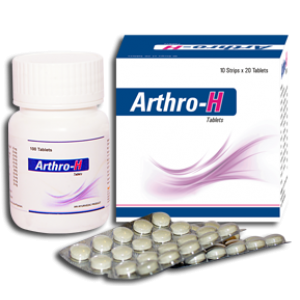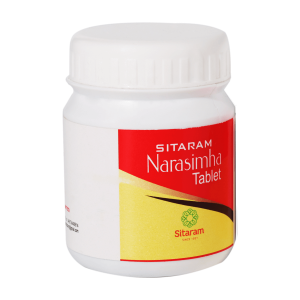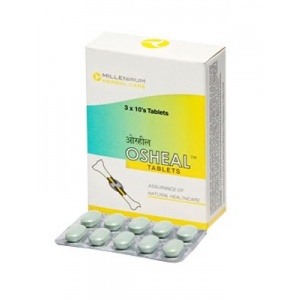Osteoporosis
Showing all 4 results
Osteoporosis is a progressive disorder of the skeletal system, in which there is a reduced bone density, causing them to be weak, brittle and easily prone to fracture. Bones can become so weak, that even a mild stress, such as a slight bump or bending over could cause the bone to crack. According to the WHO, a deviation of over 2.5 from the established standard BMD (Bone Mineral Density) is indicative of Osteoporosis. Osteoporosis affects both men and women, but is prevalent in post-menopausal women. There are three types of osteoporosis, which are:
Primary Type 1: Post menopausal occurrence
Primary Type 2: Or senile osteoporosis occurs after 75 yrs in women and men, in the ratio of 2:1
Secondary Osteoporosis: Occurs at any age an affects both men and women equally. This form of osteoporosis is known to occur after chronic exposure to certain drugs and medications, such as glucocorticoids.
Genetically Caucasian and Asian women are more predisposed to Osteoporosis, but other than that, it affects individuals of all races and genders worldwide. Appropriate treatment should include mineral supplementation, especially calcium. One must also look into the absorption and assimilation of these minerals in the body
What is Osteoporosis?
Osteoporosis is a progressive disorder of the skeletal system, in which there is a reduced bone density, causing them to be weak, brittle and easily prone to fracture. Bones can become so weak, that even a mild stress, such as a slight bump or bending over could cause the bone to crack. According to the WHO, a deviation of over 2.5 from the established standard BMD (Bone Mineral Density) is indicative of Osteoporosis. Osteoporosis affects both men and women, but is prevalent in post-menopausal women. There are three types of osteoporosis, which are:
Primary Type 1: Post menopausal occurrence
Primary Type 2: Or senile osteoporosis occurs after 75 yrs in women and men, in the ratio of 2:1
Secondary Osteoporosis: Occurs at any age an affects both men and women equally. This form of osteoporosis is known to occur after chronic exposure to certain drugs and medications, such as glucocorticoids.
Genetically Caucasian and Asian women are more predisposed to Osteoporosis, but other than that, it affects individuals of all races and genders worldwide. Appropriate treatment should include mineral supplementation, especially calcium. One must also look into the absorption and assimilation of these minerals in the body
What are the Symptoms of Osteoporosis?
Osteoporosis does not have any presenting symptoms other than loss of bone density, which is not really visible or evident, unless tested for.. Your bone mass could be low, or lowering although not yet crumbly. Over 34 million Americans suffer from low bone mass, known as ‘Ostopenia’. Only when there is a fracture or fissure or a change in your posture, would you know if the strength of your bones is compromised enough to be slated as osteoporosis.
Symptoms of osteoporosis include:
Back pain, caused due to collapsed or fractured vertebrae
Unexplainable loss of height
A fracture that occurs too easily
A stooped or hunched posture
Once any of these symptoms are detected, you should get your bone density tested and take extreme caution in lifting heavy objects or sustaining bodily injury.
What are the Causes of Osteoporosis?
Contrary to the general belief, your bones are not constantly static. They are constantly growing. Older bone cells are dissolved, and new ones are grown to replace them. As such you skeletal structure is constantly regenerating itself. According to medical journals, an average human body replaces all its bone cells in a span of 10 years. When the rate decimation of bone cells is faster than the rate of production of new cells, there is a higher porosity and bone mass reduces, leading to osteoporosis. This rate of regeneration varies from person to person and also based on age. Your bone density is highest in your 20s. After which, one must take care to maintain bone health and strength, to avoid putting yourself at risk. Factors that could lead to lowered bone density include:
Dietary Deficiencies: A diet lacking in basic minerals, especially Calcium and phosphorous is one of the most prevalent factors leading to weakening of bones. Bones need Calcium to form and regenerate. Especially during growth (Childhood and adolescence) and as one grows older there is a larger necessity for Calcium in your diet or in supplementation.
Lowered Estrogen Levels: This is the number one leading cause for osteoporosis and lowered bone density. Post menopausal women, and girls with eating disorders such as anorexia and bulimia that experience a drop in estrogen are prone to have compromised bone density.
Low Testosterone Levels: Men convert Testosterone Into Estrogen which is used for bone preservation. Lowered testosterone levels could compromise bone health.
Hormonal imbalances: Several other hormones are responsible for bone growth and an imbalance or deficiency of these could result in weakened bones. Also, as one ages, there is a rapid decline in Human Growth Hormone (hGH) which plays a pivotal role in bone formation and growth
Smoking: Nicotine has been proven to shave toxic effects on bone cells. Additionally, it also blocks the body’s ability to utilize Calcium, D3 and estrogen.
Medications: Certain medications such as hydrocortisone and glucocortidoids, that are used to treat Asthma, rheumatoid arthritis, etc. have been shown to be detrimental to bone health.
Medical Conditions: Other medical conditions such as fibromyalgia and myelomas contribute toward calcium excretion (through the urine) and leave very little calcium for utilization by bones.
The good news is, that most of these factors can be countered with minor dietary and lifestyle changes. Ensuring that you get plenty of Calcium, Vitamin D, and mild to moderate weight-lifting exercises to help build both muscle mass as well as bone strength.
What is the treatment for osteoporosis?
The most commonly prescribed medications for osteoporosis are biphosphonates (Alendronate, Actonel, Boniva).These drugs slow down the process of bone breakdown. Other medications include teriparatide and denosumab. These accelerate bone formation. Some women may also opt for hormone therapy, especially post-menopausal women, or men with testosterone deficiency. Although hormone treatments can have regressive side effects and cause further difficulties due to hormonal imbalances. The main side effects of biphosphonates are heart burn and gastric upsets, such as Acidity. The ideal way to combat osteoporosis, is naturally, with adequate calcium supplementation.
Is there a natural Cure for osteoporosis?
VedHerbs Ostreoporosis kit contains time tested Ayurvedic herbs that help improve bone strength and improve absorption and utilization of calcium. This treatment is combined with resonant homeopathic tinctures that help your skeletal system function optimally.
Additionally, if required an adjunct to help boost estrogen levels may also be added. You can call or chat with one of our Doctors, to assess what treatment plan would be best suited for you.
You can also email us on doctor@vedherbs.com to set up an appointment for a Free Online consultation with one of our Ayurvedic, homeopathic or naturopathy doctors.





